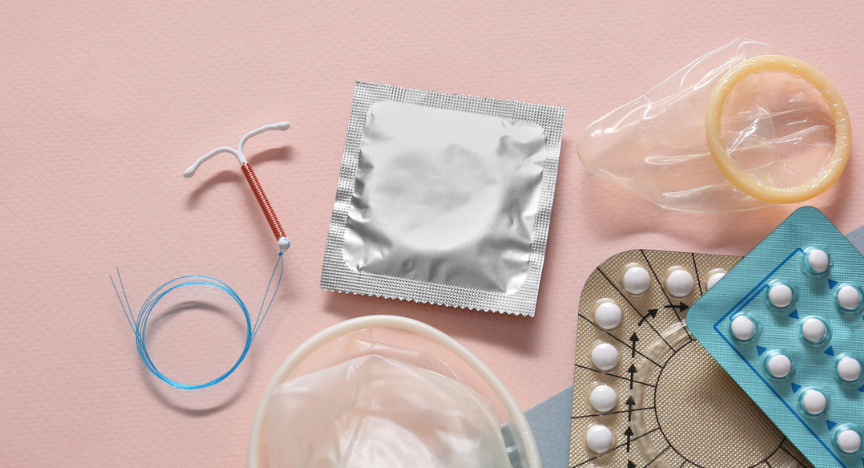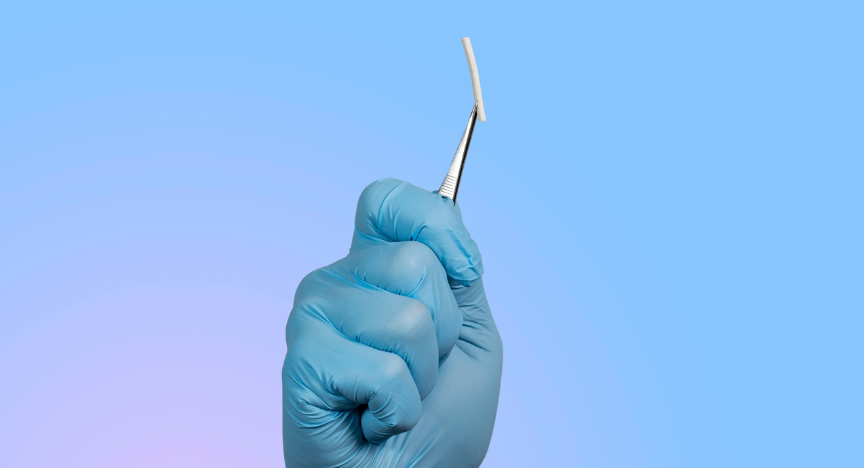
Contraception, or birth control, is something people can use to prevent pregnancy.
Understanding contraception and choosing the best option for you is an important part of looking after your sexual and reproductive health.
But, with so many different options out there, it can feel a little overwhelming. You might find yourself asking: which option will be best for me and how I like to have sex? Which option protects against sexually transmissible infections (STIs)? What about convenience of use? Cost? How effective will it be? Possible side-effects?
To answer these questions, we’ll look at popular types of contraception that fall into a few different categories – barrier, hormonal, long-acting reversible, and emergency.
Barrier options
When used consistently and correctly, barrier methods stop body fluids being passed from one person to another during sex. Condoms and diaphragms are examples of barrier contraceptives.
1. Condoms
Condoms are the only form of contraception that protect against most STIs as well as preventing pregnancy. They’re hormone free, can be used on demand and will easily fit into a purse or pocket. They also come in 2 different types – external (rolled onto an erect penis before sex) and internal (placed inside the vagina right before sex).
Condoms come in a range of shapes, sizes, colours, textures, and flavours so it can be fun to try different types and brands until you figure out your favourite. You can buy condoms at any supermarket, chemist/pharmacy, or sex shop as well as at most convenience stores and petrol stations.
When used correctly, condoms are 82% to 98% effective in preventing pregnancy and can be used alongside other contraceptive methods for extra protection.

2. Diaphragms
A diaphragm is a small, soft dome-shaped silicon cup placed inside the vagina before sex. It prevents pregnancy by forming a physical barrier which stops sperm entering the uterus. Because sperm can live for several hours in the vagina, a diaphragm needs to stay in place for at least 6 (but no longer than 24) hours after sex.
Like condoms, diaphragms are effective at preventing pregnancy (82% to 86%) when used correctly and fitted properly. However, unlike condoms, they don’t provide any protection against STIs.

Hormonal methods
Hormonal contraceptives prevent pregnancy by slowly releasing the hormones oestrogen and/or progestogen into the body through tablets or a device. These hormones work to stop pregnancy by preventing the release of eggs from the ovaries (oestrogen) and/or thickening the cervical mucus making it difficult for sperm to enter the uterus (progestogen).
A doctor’s prescription is needed for all hormonal contraception methods. It’s important to remember that none of these methods provide protection against STIs so you’ll need to still use condoms during sex to ensure you’re protected.
1. The Oral Contraceptive Pill
Oral contraceptives come in the form of a small tablet by which pregnancy-preventing hormones are released into the body.
There are a few different types to choose from, so it’s about finding the one that’s right for you. The combined pill contains 2 hormones, estrogen and progestogen, while the mini pill contains progestogen only.
They must be taken at the same time every day and are usually 93% to 99% effective when used correctly. The effectiveness might be reduced if you have vomiting or diarrhoea, or take certain medications.

2. Vaginal ring
The vaginal ring (or Nuva Ring) is a flexible plastic ring which is self-inserted and remains in the vagina for 3 weeks. It works by slowly releasing the hormones progestogen and oestrogen into your body (the same hormones used in the oral contraceptive pill, but at a lower dose). After 3 weeks, the ring is self-removed, and a new ring is self-inserted a week later.
If used correctly a vaginal ring is at least 99% effective at preventing pregnancy. However, if you forget to put a new ring in, use it incorrectly or take certain medications, it might only be 93% effective.

Long-acting reversible contraception (LARC)
LARC are contraceptive methods that last a long time but aren’t permanent. LARC are ‘set and forget’ methods which means that you don’t have to remember to do something every day or every time you have sex. This makes them a highly effective form of contraception.
However, similar to hormonal contraceptives, none of these methods provide protection against STIs so you’ll still need to use condoms during sex to ensure you’re protected.
1. Contraceptive implant
A contraceptive implant, also known as ‘the rod’ or ‘the implant’, is a small flexible rod placed under the skin of the upper arm by a doctor or nurse. It works by continuously releasing a low dose of the hormone progestogen into the blood stream. Implants need to be replaced every three years but can be removed earlier if needed.
They are 99.9% effective in preventing pregnancy.

2. Intrauterine Devices (IUDs)
Intrauterine devices (IUDs) are small, T-shaped devices that are inserted into the uterus to prevent pregnancy. They offer long-term contraception (between 5 to10 years) but can be removed at any time by a doctor or nurse.
There are 2 types of IUDs available including the hormonal IUD (Mirena/Kyleena) and the non-hormonal IUD (copper).
The hormonal IUD:
The hormonal IUD is a small T-shaped device that works by slowly releasing a very low dose of the hormone levonorgestrel. Depending on which type you get, a hormonal IUD can prevent pregnancy for up to 5 to7 years. The hormonal IUD is 99.8% effective in preventing pregnancy.

Copper intrauterine contraceptive device:
The copper IUD is a small T-shaped device made from copper. It doesn’t contain hormones and works by constantly releases a small amount of copper into your body which affects the way sperm move and survive. It can also change the lining of the uterus, preventing a fertilised egg from being able to attach and develop. Copper IUDs are 99% effective in preventing pregnancy and, depending on the type, can last up to 10 years.

3. Contraceptive Injection
The contraceptive injection is given every 12 weeks and contains the hormone progestogen. It is usually given into the buttocks or upper arm of someone with a vagina and over the next 12 weeks the pregnancy-preventing hormone is slowly released into the bloodstream.
For some people, the injection may lead to their period stopping or irregular bleeding. The contraceptive injection is 94% to 99.8% effective.

Emergency Contraception
1. ‘Morning After’ Pill
The emergency contraception pill, or what is sometimes called the ‘morning after pill’, can be used to prevent pregnancy after sex if contraception wasn’t used, contraception failed, or a woman has been sexually assaulted.
This pill contains hormones designed to prevent pregnancy up to 5 days after unprotected sex, but is most effective if taken in the first 24 hours. It’s a good idea to do a pregnancy test a few weeks later to make sure you’re not pregnant.
In Australia, you don’t need a prescription to get the morning after pill. Simply head to a chemist and ask for it at the pharmacy counter.
